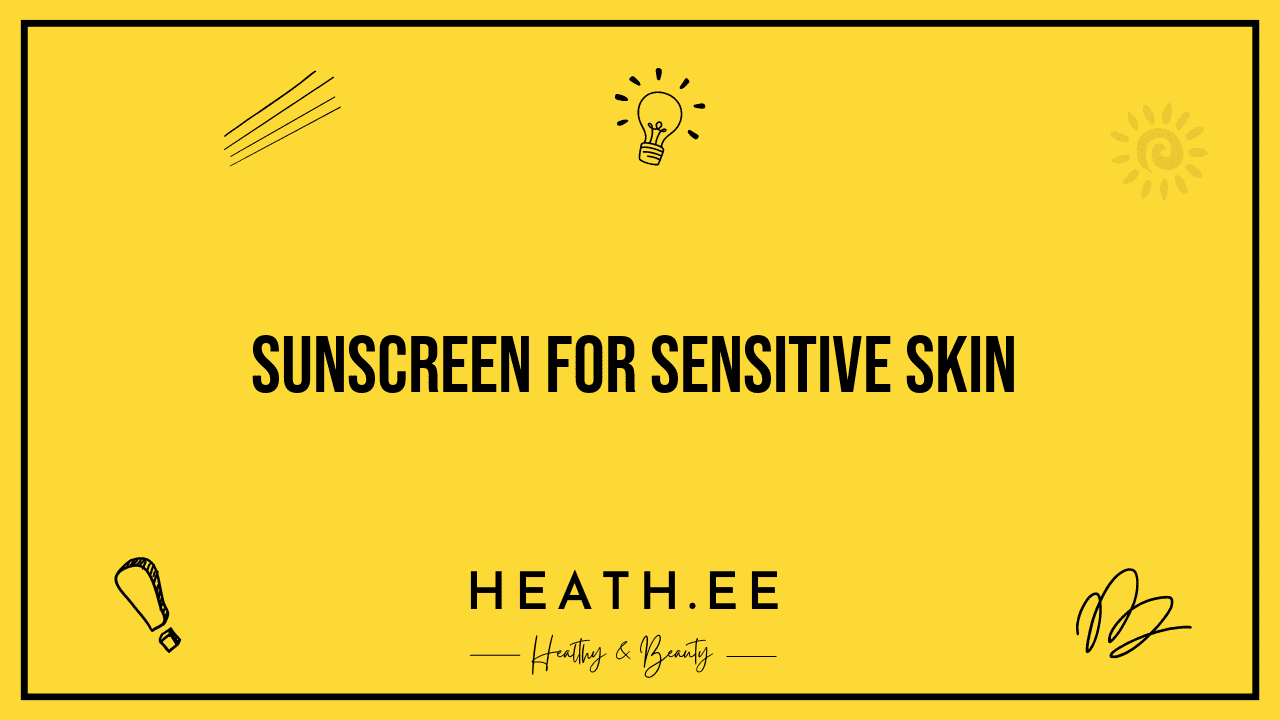When it comes to protecting your skin, sunscreen is essential. But it can be a challenge to find the right sunscreen for sensitive skin. This guide will help you understand the different types of sunscreen, what ingredients to look for, and how to apply it properly. We’ll also cover tips for choosing the best sunscreen for sensitive skin and how to find the right sunscreen for your skin type.
What Is Sunscreen?
Sunscreen is a product that you apply to your skin to protect it from the sun’s ultraviolet (UV) rays. It works by blocking or reflecting UV rays, which can cause sunburn, wrinkles, and other skin damage. Sunscreen comes in many forms, including lotions, sprays, and sticks.

Types of Sunscreen
There are two main types of sunscreen: chemical and physical. Chemical sunscreens contain ingredients that absorb UV rays, while physical sunscreens contain ingredients that reflect UV rays. Both types of sunscreen are effective at blocking UV rays, but chemical sunscreens are more commonly used.
Ingredients to Look for in Sunscreen
When shopping for sunscreen, it’s important to look for products that contain the right ingredients. For sensitive skin, look for sunscreens that contain titanium dioxide and/or zinc oxide, which are physical blockers that are less likely to cause irritation. Other common ingredients to look for include avobenzone and oxybenzone, which are chemical blockers that can be irritating for some people.

How to Apply Sunscreen
It’s important to apply sunscreen properly in order to get the most protection. Start by washing your face with a gentle cleanser and patting it dry. Next, apply a generous amount of sunscreen to all exposed areas of skin, including your face, neck, and hands. Make sure to rub it in evenly and allow it to dry before applying makeup or other products.
Choosing the Right Sunscreen for Sensitive Skin
When choosing a sunscreen for sensitive skin, look for products that are labeled “non-comedogenic” or “non-acnegenic.” These products are less likely to clog your pores and cause breakouts. You should also look for products that are hypoallergenic and fragrance-free, as these are less likely to cause irritation.
Factors to Consider When Choosing Sunscreen
When choosing sunscreen, there are several factors to consider, including the SPF rating, the type of sunscreen, the ingredients, and the application method. SPF stands for “sun protection factor” and indicates how much protection the sunscreen provides. For sensitive skin, look for a sunscreen with an SPF of at least 30.
Sunscreen for Sensitive Skin: Tips and Tricks
When shopping for sunscreen for sensitive skin, look for products that are labeled “non-comedogenic” or “non-acnegenic.” These products are less likely to clog your pores and cause breakouts. You should also look for products that are hypoallergenic and fragrance-free, as these are less likely to cause irritation.
When applying sunscreen, start by washing your face with a gentle cleanser and patting it dry. Next, apply a generous amount of sunscreen to all exposed areas of skin, including your face, neck, and hands. Make sure to rub it in evenly and allow it to dry before applying makeup or other products.
Sunscreen for Sensitive Skin: FAQs
What type of sunscreen is best for sensitive skin?
For sensitive skin, look for sunscreens that contain titanium dioxide and/or zinc oxide, which are physical blockers that are less likely to cause irritation. Other common ingredients to look for include avobenzone and oxybenzone, which are chemical blockers that can be irritating for some people.
What SPF should I use for sensitive skin?
When choosing sunscreen, look for a product with an SPF of at least 30. Higher SPF ratings offer more protection, but they can also be more irritating for sensitive skin.
How often should I apply sunscreen?
You should apply sunscreen every two hours or after swimming or sweating. It’s also important to reapply sunscreen after toweling off or patting your skin dry.
Conclusion
Sunscreen is an essential part of any skin care routine, but it can be a challenge to find the right sunscreen for sensitive skin. This guide has provided you with all the information you need to make an informed decision when choosing sunscreen for sensitive skin, including what ingredients to look for and how to apply it properly. With the right sunscreen for sensitive skin, you can protect your skin from the sun’s damaging UV rays and keep it looking healthy and beautiful.



